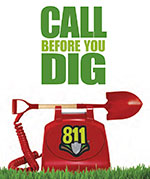The name is Temperature Pressure Relief Valve (TPR valve). This safety valve releases water (and thus relieves pressure) if either the temperature or pressure in the tank gets too high. These valves are very important. Water heaters can become bombs if the pressure gets too high and these valves fail to work. These valves can begin to run water either because
- the valve has become defective, or
- the pressure in the tank it exceeding the relief point.
If your TPR valve suddenly started leaking when it didn’t use to, and you haven’t had any plumbing renovation work done recently, the valve may simply be defective. As the valves get older they sometimes begin to leak. It may be if it has released small amounts of water over time this water has built up deposits in the valve that begin to interfere with it closing. Or, perhaps a particle from the tank gets stuck in the seat holding it partly open. There’s a lever on the valve that lets you open it deliberately. Some people will advise you do this periodically to be sure it’s working properly. In our experience if you open an older valve it’s likely it will never close properly again – it will begin weeping when it wasn’t before.
These valves are cheap and there’s only one problem replacing them — sometimes they’re hard to unscrew. You may need a long handled wrench with a cheater. Turn off the gas or electricity and cold water supply to the tank. You only need to drain enough water to get below the level of the valve. Don’t drain a lot of water until you’ve broken the valve loose, so the weight of the water helps keep the heater from moving while you pull on the wrench. Wrap some teflon tape on the threads of the new valve when you replace it.
Note: If you also replace the discharge tube, it must be made of a material that’s rated for both high temperature and pressure. This includes most rigid wall copper, iron and, in most places, chlorinated polyvinylchloride (CPVC plastic not regular PVC) pipe. The pipe size must match the opening size of the TPR valve discharge (usually ¾ inch). It must terminate 6″-12″ above the floor, and the end cannot be threaded or have a fitting which permits connecting a plug or cap.
The other reason for the TPR valve to run water is high pressure in the water heater tank. This is usually caused by one of two things — high main water pressure or a back flow prevention/check valve.
Houses built or renovated in the past 10-20 years may have a back flow prevention valve in the water supply line. These valves only allow water to go in one direction. Building codes have begun to require them so that once water enters your house it cannot move backward into the water supply system. This introduces a new problem. When the water in the water heater tank is heated it expands, making a greater volume of water. This extra water needs somewhere to go. If all the faucets in the house are closed it can’t go that way. Before these one-way valves, water was simply pushed back out of the house into the main supply. The backflow valve prevents this, so the extra water has no place to go and pressure builds in the tank until it exceeds the TPR valve set point (about 120 psi) and water comes out the TPR discharge tube. As you may have guessed this isn’t good. The solution is to install an expansion tank in the cold water line between the backflow valve and the water heater. These tanks give the extra water a place to go. If your builder installed a backflow valve he should have also installed an expansion tank but… if you have an expansion tank it may have failed.
If the main water supply pressure is too high this can also cause the pressure to exceed the TPR valve set point. The Uniform Plumbing Code calls for water delivered to homes for domestic use at between 50 to 70 psi. Supply lines as well as appliances are designed to withstand up to 80 pounds per square inch.
If the supply pressure at your meter exceeds these numbers, a water pressure regulator should be installed to reduce the pressure to between 50 and 70 psi. Over time the rubber and metal parts in these regulators can fail. When the regulator fails, water pressure to the home may increase putting a strain on valves, hoses and appliances they were not designed to withstand. Keep in mind that a pressure regulator will also behave like a backflow valve — it will not allow water to go backward through it.
If you suspect the pressure in your water heater is too high you can buy a water pressure gauge and check it yourself.
Connect the gauge to the water heater drain faucet (garden hose thread) and open the valve. Run hot water at a kitchen or bathroom sink until the water heater turns on. Stop the flow of hot water. If the pressure starts creeping up as the heater heats the water, this is a closed system and an expansion tank is necessary.
If the pressure does not increase as the water is heated, but the pressure reads above 80 psi all the time, your supply pressure is too high. Install a pressure reducing valve. To check the supply (main) pressure you can also connect the gauge to an outdoor faucet, and turn on the faucet. Make sure the faucet is “regulated”. Some outdoor faucets are unregulated. If the pipe connected to the faucet comes out of the wall it’s probably regulated.
